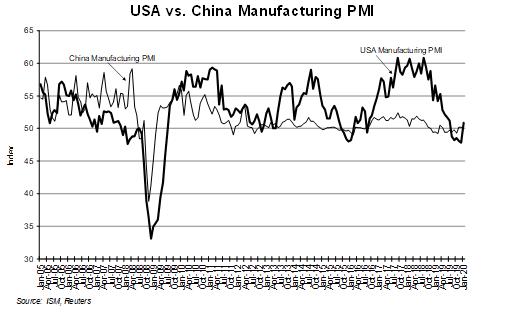WSD is negative about the evolving structure of the global business environment for international manufacturers, including steelmakers:
1. Manufacturers will be facing more price competition for their products.
- The price will be commoditized for a rising number of specialty products.
- International commerce is becoming ever more seamless.
- Global trade in merchandise will remain robust. New trade routes will challenge established ones.
- Online sales of merchandise will continue to surge – making it harder to create brand loyalty.
- Price is “king,” when it comes to online transactions

2. Investment in Developing World manufacturing facilities has become less attractive. The manhour content at new manufacturing plants in the Advanced Countries is so low that the bargain-basement wage costs in the Developing World have less allure.
3. Capital is replacing labor. Gains in labor productivity will be sizable. Workers have lost their “pricing power.” They are fungible and replaceable.
4. A sizable excess supply of money is circulating the globe looking for a home. Returns on manufacturing investment are so poor that in many cases, a rising proportion of these funds are placed in financial instruments – including U.S. 10-year Treasury notes (that only yield about 1.55%). China, Japan and the EU are each holding roughly $1.2 trillion of U.S. treasury securities – versus USA GDP of about $20 trillion per annum.
5. Monetary authorities in the Advanced World have a reduced capability to stimulate their economies via interest rate cuts because the interest rates already are so low.
6. Foreign exchange rate swings will be sizable, unpredictable and destabilizing.
7. International manufacturing companies will cajole their governments to provide more protection from foreign goods. But, the benefits of these restraints, even when granted, over time will be less than expected.
8. Government officials by 2030 in more countries will be implementing far more stringent measures to combat air, water and CO2 pollution. Unfortunately for the steel industry, it accounts for about 4-5% of manmade greenhouse gases.
9. National debt in many countries will rise further as a share of GDP – in part due to the expense of funding ever-rising entitlements for retired workers.
10. Global growth from 2022 to 2030 may be about 3% per annum – a figure that may be 0.5 percentage points higher than the consensus on this subject:
- The non-Chinese global GDP growth averages about 3.0% per year compounded. The USA economy will be one of the best performing major economies reflecting its: a) the oil and gas surplus due to the shale revolution; b) massive fertile farmlands; c) widespread river transportation system; and d) vast and highly liquid financial system.
- The Chinese economy slows to a 4-5% GDP growth rate by 2030 reflecting, as a share of GDP, rising household spending and lessened fixed asset investment. This is a slowdown, not a collapse.
- Developing World GDP expands only about 4% per annum growth – which is disappointing. As noted above, more countries become less attractive outlets for foreign investments because low worker wages are no longer a prerequisite for success. The country risk factor is a problem for foreign investors.
11. More governments will seek to boost fixed asset investment as a share of GDP in order to create more jobs – of course, this action replicates the time-tested Chinese approach to promote the expansion of their economy.
12. The availability of global instant and reliable information about economic developments, financial conditions and individual industry supply/demand dynamics leads to more frequent individual country adjustments. In turn, these mini-corrections diffuse excesses and lay the foundation for less frequent global recessions.
13. Medical breakthroughs add further to life expectancy. The bad news is that, in many countries, municipalities will be even more burdened with monumental costs for retiree pensions and health care.
14. An “Age of Incivility” becomes “the norm” in even more countries. Governmental decision making becomes more labored as the opposing political parties don’t cooperate with one another.
15. Global political instability may rise because the United States is no longer the policeman that assures global commerce. The USA is no longer dependent on Middle Eastern oil.
16. Global automotive production stagnates at about 95 million units including commercial units. The usage of automobiles in cities has peaked as: a) more cities place a tax on automotive usage as they seek to reduce air pollution; and b) UBER-type services rise so much in popularity that this reduces demand for individual car ownership.
This report includes forward-looking statements that are based on current expectations about future events and are subject to uncertainties and factors relating to operations and the business environment, all of which are difficult to predict. Although we believe that the expectations reflected in our forward-looking statements are reasonable, they can be affected by inaccurate assumptions we might make or by known or unknown risks and uncertainties, including among other things, changes in prices, shifts in demand, variations in supply, movements in international currency, developments in technology, actions by governments and/or other factors.
The information contained in this report is based upon or derived from sources that are believed to be reliable; however, no representation is made that such information is accurate or complete in all material respects, and reliance upon such information as the basis for taking any action is neither authorized nor warranted. WSD does not solicit, and avoids receiving, non-public material information from its clients and contacts in the course of its business. The information that we publish in our reports and communicate to our clients is not based on material non-public information.
The officers, directors, employees or stockholders of World Steel Dynamics Inc. do not directly or indirectly hold securities of, or that are related to, one or more of the companies that are referred to herein. World Steel Dynamics Inc. may act as a consultant to, and/or sell its subscription services to, one or more of the companies mentioned in this report.
Copyright 2020 by World Steel Dynamics Inc. all rights reserved